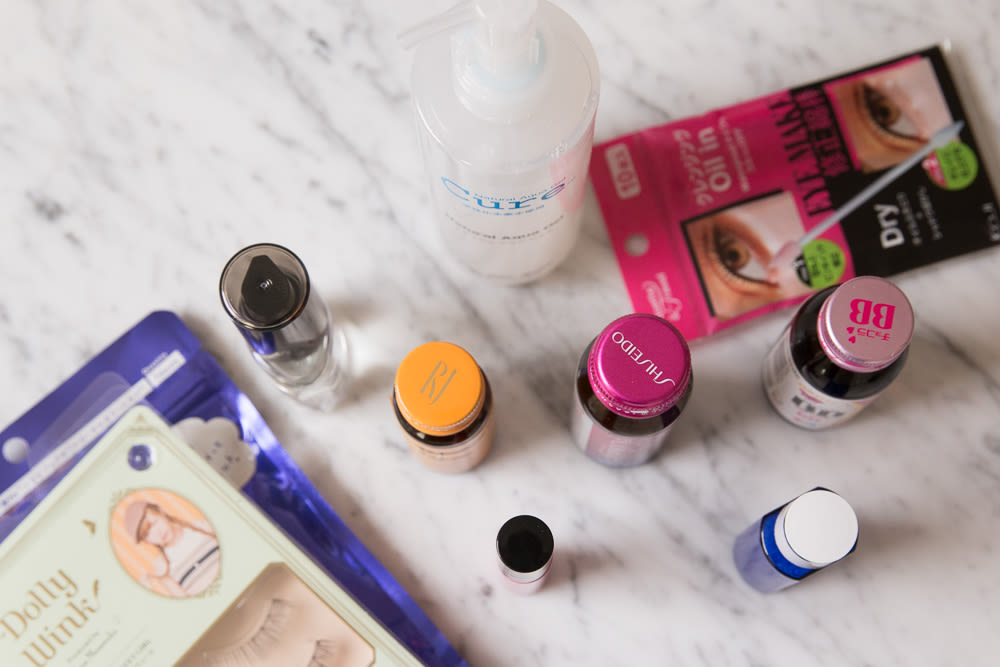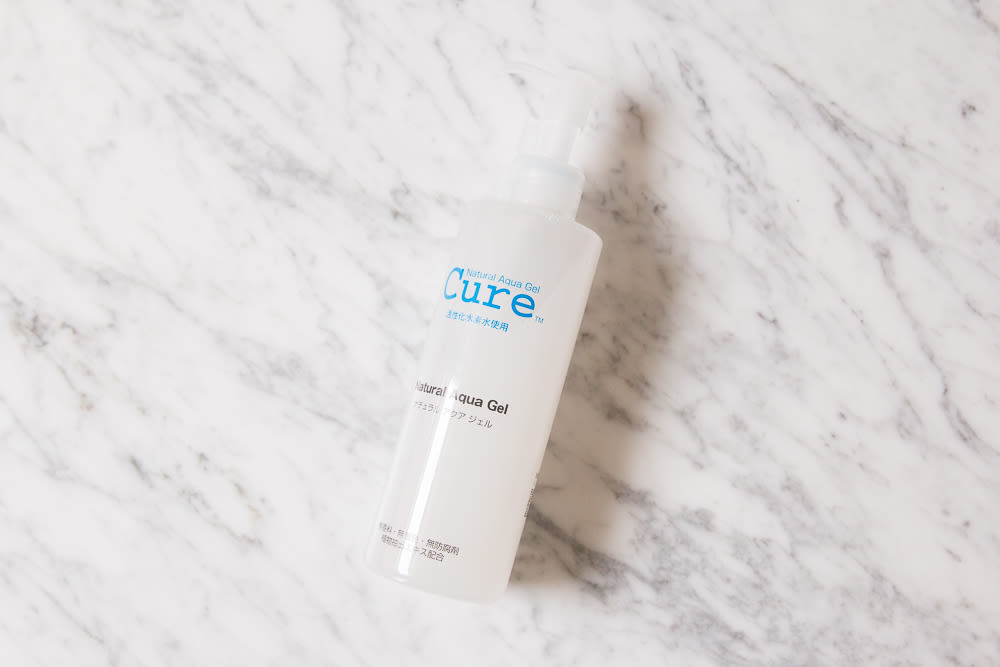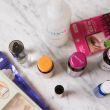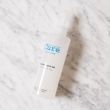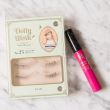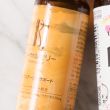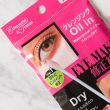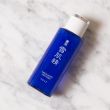To people from Tokyo, the drugstore is probably more of a necessary pit stop on the way home from work. To me—an American tourist—it’s a destination point. I’m somewhat ashamed to admit that I was counting down the days to visit Japan, not because I wanted see the shrines, soak in an onsen, or hike Mt. Fuji—but because I wanted to go shopping. I came back to New York having bought only two types of souvenirs: beauty products and candy—which, to me, were comparable.
I don’t have great pictures of the drugstores, because they’re all shockingly overcrowded with people, products stacked and piled up everywhere, and discount signs or talking advertisements on every shelf. It’s overwhelming. Some might even call it a God-awful experience, but the outcome is entirely worth it. For starters, drugstores hold everything from SK-II to DHC. They also have better quality brands and products (yes, I said it), which we don’t get in the states, for cheaper than we pay in the states. If you don’t speak Japanese, find a young employee; most of the high school or college-aged students speak English and are excited to help, especially when it comes to beauty. However, going in, it does help to know what you’re looking for.
After talking to some friends who have lived in Japan for a long time, I found some of the most popular, must-have products that you can really only get in Japan (or—thank God for this—online for a little more money!).
1. Cure Natural Aqua Gel: I had no idea what this was, but people around me were buying it in bulk, so I grabbed one too. Turns out, it’s Japan's No.1 best-selling skincare product—one bottle is sold every 12 seconds in Japan. It’s a water based exfoliator gentle enough for even the most sensitive skin as it is scentless and made from the natural plant extracts of rosemary, ginkgo, and aloe vera. The 250ml bottle, as the urban myth goes, will last about six months, which makes the “expensive” drugstore product (it sells for about 4,600 Yen or $38) a wise investment.
2. Mascara and Eyelashes: Having big doe-eyes is big in Japan, so it’s no wonder there are so many options for getting the perfect eyelashes. Koji Dolly Wink is a crazy-popular Japanese brand of lashes, mascaras, and eyeliners by Tsubasa Masuwaka, a fashion-model-turned-businesswoman. You can think of her as the less-organic Miranda Kerr of Japan. I picked up her Sweet Girly eyelashes (19,35 Yen or $16), which are the most natural-looking of her products. To her credit, they’re amazing, and her loyal following will attest. As for mascara, I grabbed the Isehan Kiss Me Heroine Make Long and Curl Mascara. It was only 430 Yen, which is about $3.50. It’s cheap but doesn’t feel that way. The manual is entirely in Japanese, but luckily mascara is sort of a universal language.
3. Potions and Tonics: Drinkable beauty for 300 Yen ($2.50)? Sure, why not. Shiseido, DHC, and other popular beauty brands have made ingestible skin care solutions taste pretty good. Chocola BB Drink alleviates acne with vitamin B2, B6, and B1 to promote healthy turnover in skin cells. I thought this would taste like chocolate but, to my dismay, it tastes like a fruit roll-up. RJ by Shiseido is a Royal Jelly supplement infused with folic acid, vitamin C, and vitaim E. It was made particularly for women to boost energy and their immune systems. The Collagen Enriched Drink by Shiseido was first launched in Japan before collagen supplements were popular in the states. Now, you can buy them on Amazon in tablet form. Maybe the tiny liquid vitamins will make their way West pretty soon.
4. LuLuLun Japan Rich Moisture Face Masks: There are hundreds of face masks in Tokyo—some made with snake venom, horse oil, snail juice, white roses, etc. But you can’t go anywhere without seeing LuLuLun packaging. This one is great for moisture, made with seaweed extract, hyaluronic acid, and yuzu citrus extract. It’s about 1,200 Yen ($10.50) for a set of seven masks.
5. Oshima Tsubaki Camellia Oil: This Japanese all-natural oil is amazing for skin and hair. This particular brand is the number-one seller for multi-use oils in Japan, as they are happy to tell you. “No.1 product in Japan” is plastered across their advertisements, and when I asked the pharmacist for a good skin and hair oil, she literally ran to the shelf and retrieved this little bottle (2,540 Yen or $21 for one bottle).
6. Q-Tips: It sounds strange, but it’s a staple in every Japanese beauty bag. At the drugstores, you can buy them in every shape, size, and color. Popular Japanese beauty tutorials on YouTube often suggest using Q-tips to apply fake lashes (getting that lash glue to stay properly takes work!), clean up liquid eyeliner, or apply eyeshadow.
7. Kose Medicated Sekkisei: This is a skin savior. It’s a liquid moisturizing toner that evens skin tone and slightly brightens it. It helps oily skin look matte. People swear by it, but it’s expensive. For a tiny bottle, expect to pay about 7,800 Yen or about $60. Luckily, it’s concentrated, so a little goes a long way.
—Alyssa Reeder
Photographed by Tom Newton. For more Japanese beauty, read about Alyssa's experience in a Japanese onsen here.
